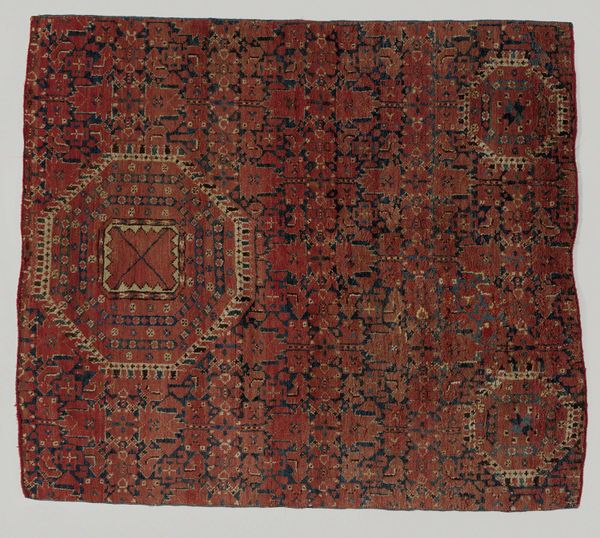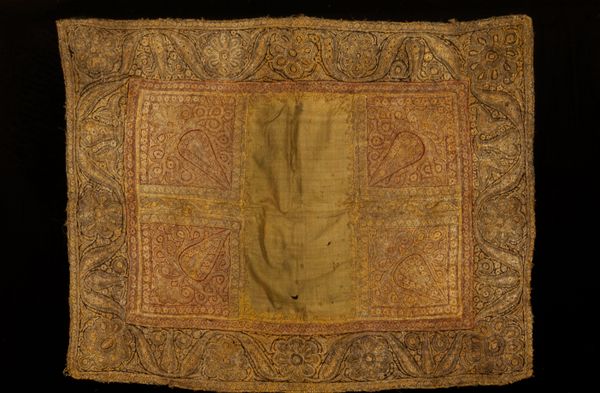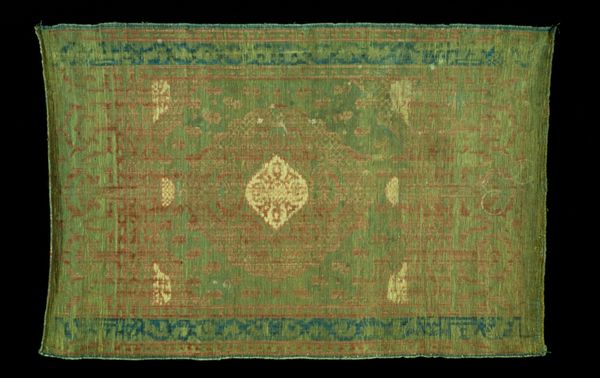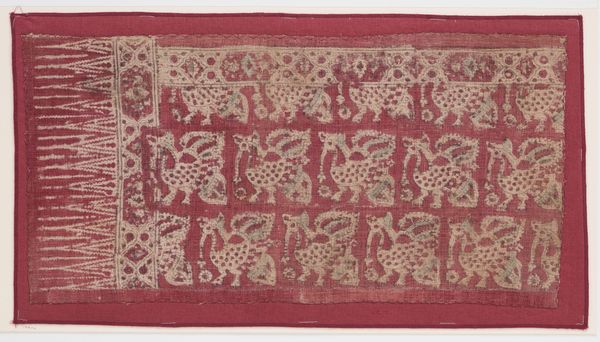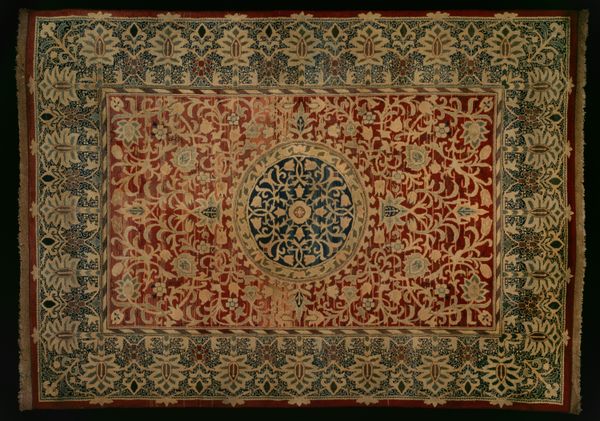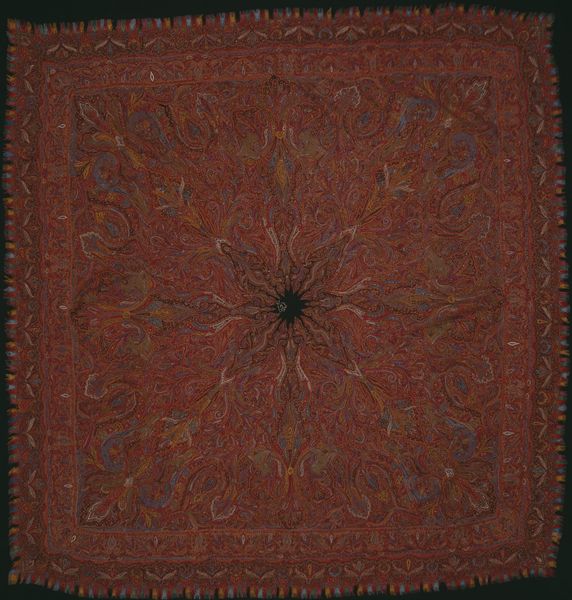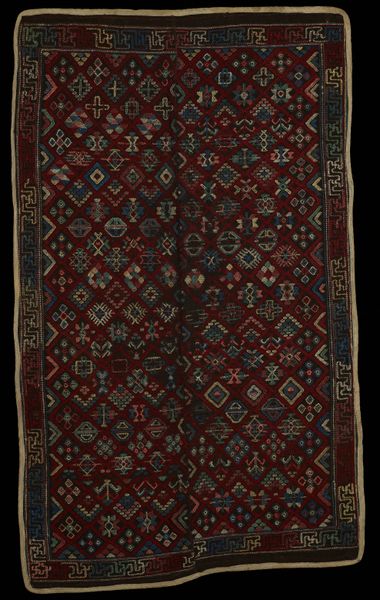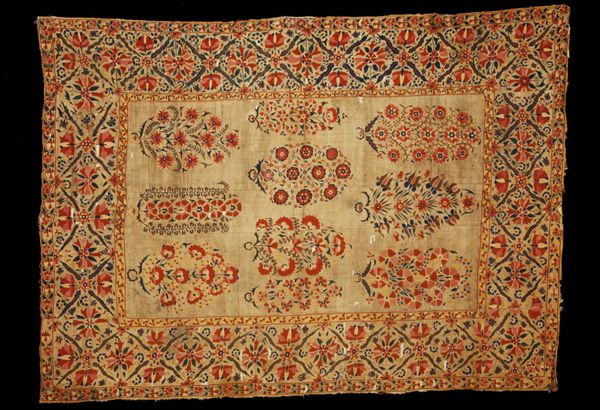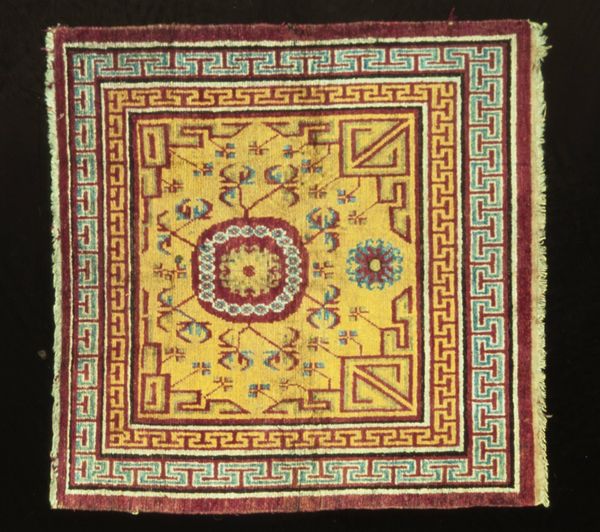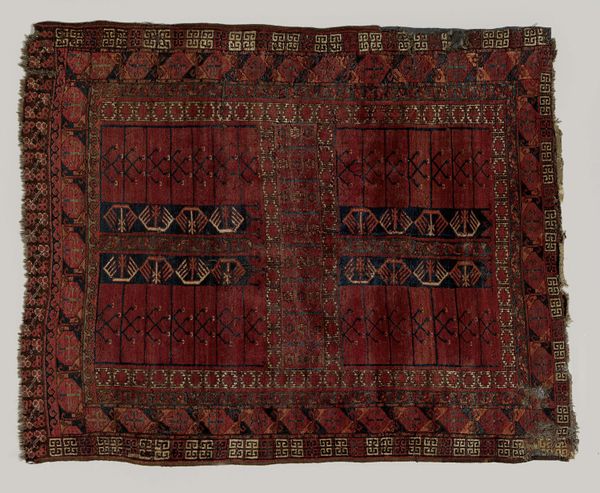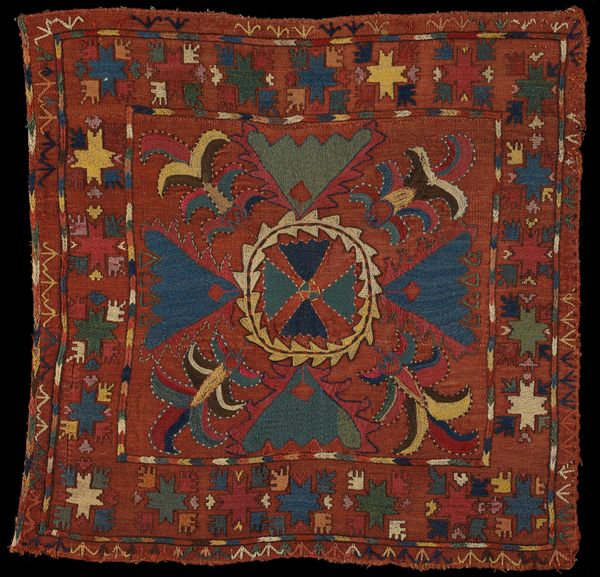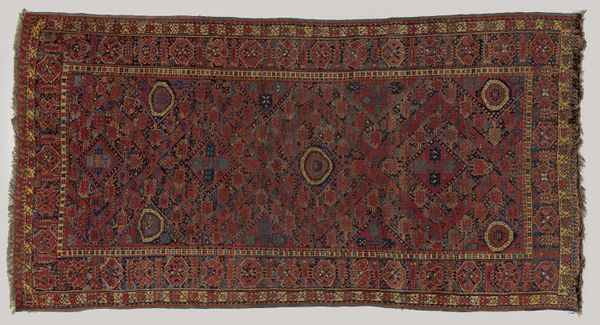
drawing, silk, textile
#
drawing
#
narrative-art
#
silk
#
asian-art
#
textile
#
miniature
Dimensions: 68 x 72 in. (172.72 x 182.88 cm)
Copyright: Public Domain
Editor: This is an Embroidered Tablecover, dating to the 19th century. It's made of silk. The sheer amount of detail is astonishing; it must have taken so long to make. I am struck by how many narrative scenes there are. How do you interpret this work? Curator: The piece seems steeped in social and historical contexts. Thinking intersectionally, it's crucial to understand how textiles, often dismissed as ‘craft’ rather than ‘art’, have been historically linked to feminine labor and undervalued in many cultures. Who was the likely maker, and what were the conditions of her labor? Do you see any specific cultural or religious motifs within the embroidered imagery? Editor: I see figures that seem South Asian – maybe some Hindu iconography, with deities riding animals? But I'm not sure. Is this where it was made? Curator: Possibly. Examining the material culture – the silk, the dyes, the stitching techniques – can give us clues. What stories might the maker be telling, and to what audience? Consider also that luxury goods like these table covers moved across borders, becoming powerful symbols of status and cultural exchange, but also possibly of colonial power. Editor: So, even a seemingly innocuous table cover can be read as a complex narrative about gender, labor, and colonialism. Curator: Exactly. It is not just a beautiful object; it is a site where multiple narratives intersect. By asking critical questions about its production, consumption, and representation, we can gain deeper insight into the complex web of social, economic, and political relations that shaped its creation. Editor: I’ll definitely be looking at textiles in a new light now. Thanks for the perspective.
Comments
minneapolisinstituteofart about 2 years ago
⋮
In a sea of tightly embroidered figures, many scenes unfold at once. Women socialize in beautiful gardens and are surrounded by attendants, noblemen hunt and slay foxes, tigers, and mythical creatures, British soldiers are fanned by servants, and Indian elites are fanned by servants in British soldier costume. A regal man astride an elephant takes a leisurely drag from a hookah. Most of these scenes appear at the outer border, each framed by Indo-Islamicate arches. Their composition and subject matter mimics those represented in painting traditions of neighboring hill states. At each of the four corners, heightened by copious use of gold thread, are elaborate court scenes. A gold central medallion holds an untranslated Persian insciption, which in turn is surrounded by riders on horseback, processions of soldiers bearing swords and muskets, and Indian nobles seated on European upright chairs.This type of embroidered textile might have developed as a less expensive alternative to woven textiles, which were taxed heavily in this period.
Join the conversation
Join millions of artists and users on Artera today and experience the ultimate creative platform.
